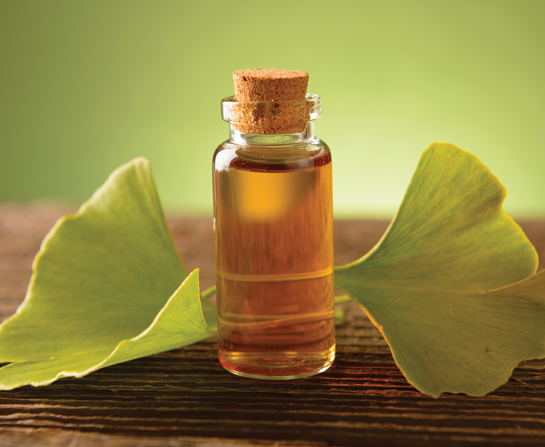Go Ginkgo
May 1, 2022 Return

The origins of Ginkgo
Ginkgo biloba, also known as the Maidenhair tree, Kew tree or Japanese Silver Apricot tree, is one of the oldest surviving species of tree. The tree is considered to be a “living fossil”, as it survived through major extinction events. Ginkgo trees have very unique properties; they are capable of growing more than 130 feet and can live for over 1000 years.
Ginkgo owes its name to a traveller named Kaempfer who proposed it in 1712. This name was adopted by Linnaeus, the founder of the binomial nomenclature system. He added the species name “biloba” to indicate that the wedge-shaped lamina of the leaf had 2 divergent segments or lobes. Hence, the botanical name of the herb, Ginkgo biloba Linn.
Claimed uses of Ginkgo
In traditional Chinese medicine, the seeds of the ginkgo tree are sometimes used for treating cough, asthma, bronchitis, urinary and digestion disorders. The most widely used part of the Ginkgo tree are its leaves. It is one of the most researched herbs in the world and is gaining recognition as a brain stimulant that enhances memory because of its beneficial effects on the vascular or circulatory system.

It also acts as a powerful antioxidant and may help control the transformation of cholesterol to plaque (fatty deposits associated with the hardening of arteries causing atherosclerosis, as well as relaxing constricted blood vessels.
Due to its positive effects on blood circulation, ginkgo is found to be a candidate of choice for treatment of diabetic peripheral vascular disease, haemorrhoids, stroke, Raynaud’s Syndrome (a blood vessel disorder) and varicose veins. It has also been used in the treatment of eye and ear disorders, as the improved blood circulation to the eye can slow down any retinal damage. In some clinical tests, it was found to have improved hearing loss in the elderly.
Furthermore, the positive circulatory effects can relieve disorders affecting the extremities like cold hands and feet and chronic arterial blockage. According to the Institute for Natural Products Research, Ginkgo has also been claimed to soothe bladder irritation and prevent bed-wetting, treat gonorrhoea and intestinal worms and improve sexual energy.
What does Ginkgo contain?
The herb Ginkgo contains mainly 2 groups of phytoconstituents, namely flavonoids and terpene lactones – including ginkgolides A, B, C, bilobalide, kaempferol and quercetin. These phytoconstituents help to control and regulate imbalances in the body, thereby controlling damage to the body and brain.
How does Ginkgo work?
The effects of Ginkgo can be attributed to an increased blood and oxygen flow to the brain, regulating the release of neurotransmitters. The result of improved blood flow to the brain is improved mental performance and memory.
Does Ginkgo have any negative effects?
Ginkgo should be considered with caution when being taken with medications for co-existing diseases, especially when consumed concomitantly with other herbs that can increase bleeding like ginger, garlic, and ginseng. Its safety for use during pregnancy and lactation lack sufficient scientific evidence and hence should be avoided.
How is ginkgo available for consumption?
The extracts of the ginkgo are formulated as capsule, soft gel, tea and liquid extract dosage forms. The dosing of these may vary depending on the preparation. Medical website MedicineNet.com recommended the dosage of 120 – 240 mg per day in divided doses, 2 to 3 times a day for dementia; and 120 – 160 mg per day in divided doses, 2 to 3 times a day for vertigo and tinnitus.
What does the future hold?
With more scientific studies to support its claims, coupled with advances in medical technology, we can witness further findings to prove the quality, efficacy and safety of ginkgo across a wider population database. We can expect newer products using more potent standardised extracts containing the active phytoconstituents to enhance the effects with fewer side-effects.
References:
Cambridge University Press. Available at www.cambridge.org
Missouri Botanical Garden. Available at www.missouribotanicalgarden.org
International Organisation of Palaeobotany. Available at www.palaeobotany.org
Cleveland Clinic. Available at www.clevelandclinicmeded.com
Jiang X, et. al. (2005). Effect of ginkgo and ginger on the pharmacokinetics and pharmacodynamics of warfarin in healthy subjects; Br. J. Clin. Pharmacol.; 59(4); 425-432.
Drugs.com. Available at www.drugs.com
About Health. Available at www.altmedicine.about.com
MedicineNet.com. Available at www.medicinenet.com
Herb Wisdom. Available at www.herbwisdom.com
WebMD. Available at www.webmd.com
If you like this article, do subscribe here.
